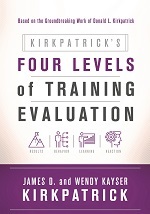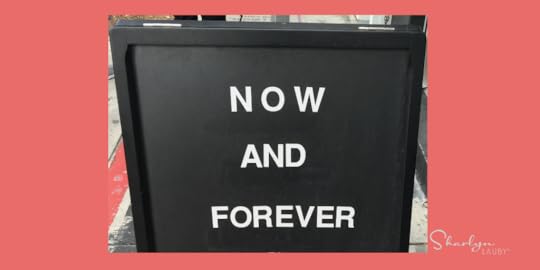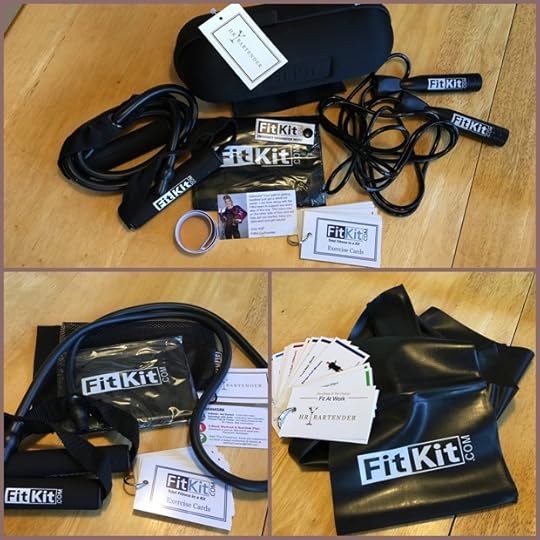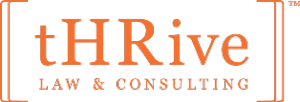Sharlyn J. Lauby's Blog, page 143
January 31, 2017
The 3 Key Metrics in HR Predictive Analytics
For the past few years, every HR related trends post included predictive analytics. So, what exactly are predictive analytics? I like to think of it this way: HR metrics tell you what happened in the past. For example, time to fill. Or they’re focused on cost-containment, such as cost per hire. Both of these metrics are valuable, but it’s not all the information we might need to make business decisions.
Predictive analytics offer insights into the future. It’s focused on probabilities and impact, so it provides flexibility to the organization’s needs. I know, that sounds like a tall order. I decided that I wanted to learn more about predictive analytics so I picked up a copy of the book “Predictive Analytics for Human Resources” by Jac Fitz-enz and John Mattox. (Fitz-enz’s book “How to Measure Human Resource Management” is my go-to book for HR metrics.)
Why should HR pay attention to predictive analytics?
There are times when today’s business environment is moving so quickly that we cannot always be focused on what’s happened in the past. We have to give equal time (and some might argue more time) to what we think is going to happen in the future and plan accordingly.
That’s where predictive analytics comes in because it’s what you do with the information you gather. Predictive analytics measures the three things business people talk about the most: efficiency, effectiveness, and outcomes.
Efficiency measurements include some we already calculate such as average number of days to fill a requisition and cost per hire.
Effectiveness measurements might contain new hire performance ratings, engagement survey results, and exit interview data.
Outcomes measure profitability, productivity, and retention.
Predictive analytics is about the connection between these three types of measurement. Here are a few examples:
Number of open hires (efficiency) – Quality of hire (effectiveness) – Length of employment (outcome)
Average cost per hire (efficiency) – Cultural fit (effectiveness) – Contribution to product quality (outcome)
Amount of training attended (efficiency) – Hi/lo potential status (effectiveness) – Increased profit margin (outcome)
HR metrics aren’t going away. Neither are predictive analytics.
A few months ago, I wrote a post about the need for HR pros to focus on their analytical abilities. If you’re looking for a way to increase your skills, wrapping your arms around predictive analytics might be a good place to start.
An increasing number of HR departments are designing analytical roles. If you’re looking for a job in human resources, knowing something about predictive analytics will be important.
HR wants to be on the front-end of this trend. Because it’s not going away anytime soon. If ever.
Image captured by Sharlyn Lauby near the Wynwood District in Miami, FL
The post The 3 Key Metrics in HR Predictive Analytics appeared first on hr bartender.






January 29, 2017
Employee Engagement Is Everyone’s Job – Ask #HR Bartender
Throughout my career, I’ve heard the lines “Sales is everyone’s job.” and “Recruiting is everyone’s job.” Meaning that, while organizations have sales departments and recruiting teams, there’s an expectation that everyone is working together to make sure the organization brings the maximum amount of revenue and attracts the best talent.
Today’s reader note reminds me that everyone has another job.
I’m an HR generalist with a heavy focus in training, performance, and engagement. Lately, I’ve a noticed HR roles that focus solely on employee engagement. Do you think employee engagement roles is a trend or here to stay?
I’m early in my HR career and don’t want to pursue a career in employee engagement and lose other core competencies that I have grown over the past few years. I enjoy the employee engagement focus but worried that it’s only a trend.
First of all, I don’t believe the concept of employee engagement is a trend. At some future point, people might call it something different from engagement and that’s okay. But, organizations need engaged employees. It helps them produce quality products/services, deliver excellent customer service, and achieve their business goals.
I’d add that organizations today need to learn more about how to create an engaged workforce. The latest statistics from Gallup indicate that only 1 in 3 employees are engaged. There’s a lot of work to be done and, unfortunately, I don’t see us going from 33 percent engagement to 100 percent overnight. So, the focus on engagement will be around for a while.
That leads to the idea of having dedicated roles focused on employee engagement. This is where I get a little concerned. I believe that it’s everyone’s job to create engaged workplaces. So, does creating dedicated employee engagement roles take everyone else off the hook? If the answer is like the examples above where there’s an employee engagement team but everyone’s expected to contribute, then it’s totally cool. If not, then I would wonder how someone can be successful if they are solely responsible for making employee engagement happen.
Employee Engagement is Everyone's JobClick To Tweet
The answer really comes down to organizational culture. Is the company culture one that will hold everyone accountable for contributing to engagement OR one that will hold a single person / small team accountable? Maybe instead of looking at the trends, we need to look at workplace actions.
Image captured by Sharlyn Lauby after speaking at the Healthcare Human Resources Association Conference in Stillwater, MN
The post Employee Engagement Is Everyone’s Job – Ask #HR Bartender appeared first on hr bartender.






January 27, 2017
Definitions Bring Consistent Answers – Friday Distraction
When I was younger, I would ask my mother questions and if she didn’t give me the answers I was looking for, I’d go ask my father. I’m sure that I’m not alone in using that tactic.
When I started in human resources, I discovered that employees sometimes do the same thing. They ask one supervisor and if they didn’t get the answers they were looking for, they’d ask another supervisor. As you can imagine, it created challenges. One supervisor would say “yes” and the other would say “no.” At some point, the supervisors and the employee would end up in HR trying to resolve the matter.
I was reminded of those different responses when I saw this Time Well Spent from our friends at Kronos. When we ask for information, it’s possible the answers can be different depending upon who we’re talking to. And that’s not what we want. Especially when it comes to data.
But there are ways to ensure that people get the right information:
Define the request. In the cartoon, the request is for productivity data. Well, how is productivity defined in the organization? That will help the person requesting the data make the proper request. Even if they don’t know how the data is extrapolated, they know what they’re trying to accomplish.
Understand the use. Requests for data and information should not be a one-way conversation. Regardless of how the request is made, the person supplying the information should understand how the data is being used, so they provide the proper info.
Don’t make assumptions. Once the data is received, check it for accuracy. Make sure the requestor knows how to read and use the information. Often the process of getting the data is the easy part. It’s making sense of the data that’s the hard part.
When we ask the right questions, we get the right data and information to make good decisions.
The post Definitions Bring Consistent Answers – Friday Distraction appeared first on hr bartender.






January 26, 2017
Employee Well-Being Is a Company Issue
I don’t know that the title of this post is a surprise to anyone. Healthy individuals make for healthy employees. And healthy employees are productive, contributing to the organization’s goals (and bottom-line.)
When we talk about “healthy”, we’re not just referring to physical health. Gallup has one of the best well-being definitions I’ve seen. It’s a great way to view being “healthy” and has five components.
Career: Liking what you do each day. Think of this as job satisfaction.
Social: Having supportive relationships both in your personal and professional life. This includes associations you have with managers and colleagues.
Financial: Managing your economic life. We all know money can be a major source of stress.
Community: Feeling safe and proud of where you live.
Physical: Having the physical energy and good health to get things done.
Organizations are starting to address these individual components of well-being with employee engagement strategies, mindfulness training, and financial literacy classes. I ran across something recently that I wanted to share in the physical health category.
FitKit is a portable fitness program. It comes in two sizes – classic and mini. The classic FitKit includes a jump rope, resistance band, resistance tube, and exercise cards packaged in a neoprene tube for easy storage. The mini includes the resistance band and tube with exercise cards in a mesh bag. FitKit was kind enough to send me these to test drive.
You guys know I travel a lot. But I must admit that I do not like working out in hotel gyms. FitKit gives me the ability to work out in my hotel room. Both kits fit comfortably in my luggage – no excuses! And I really liked the workout plan that Founder Amie Hoff includes with the kit. I’m one of those exercisers that doesn’t want to figure it out on my own. I leave my FitKit in my luggage, so it’s always there for me.
FitKit can be customized with your company logo. I know a lot of organizations are looking for logo items to give to employees. Many offer rewards in their wellness programs. This might be something to consider.
This year, I saw a lot of people declare 2017 was the year they were going to get into shape and get healthier. Organizations should want their employees to accomplish that goal. And make an investment to help their well-being.
Images captured by Sharlyn Lauby just before working out with her FitKit on the road.
The post Employee Well-Being Is a Company Issue appeared first on hr bartender.






January 24, 2017
4 Ways to Measure the Success of Your HR Programs
Any time you create a program, it’s necessary to measure the results. Even the incredibly informal “Let’s do it and see what happens.” approach considers evaluation. But the measurement and evaluation portion of any program needs to be well thought out. Measure the wrong thing and the program can look like a failure (when it’s not) or vice versa.
I’ve always been a fan of the Kirkpatrick model. It was created by Dr. Don Kirkpatrick in the 1950s and presents four levels for training evaluation: reaction, learning, behavior, and results.
Reaction refers to the degree that participants found the program favorable.
Learning is the extent to which participants acquired the intended information.
Behavior is the degree that participants apply what they’ve learned.
Results is the extent that the learning impacts the organization.
One of the key aspects of the model is that there’s an inverse relationship between the degree of difficulty to collect the data and the usefulness of the data. For example, Level 1 – Reaction is the easiest evaluation to conduct but it also provides the least amount of data. On the other hand, Level 4 – Results is the most difficult to conduct and the most valuable in terms of connecting learning to the business.
 I’ve been thinking about the Kirkpatrick model lately. The Association for Talent Development (ATD) shared with me a new book on the model, “Kirkpatrick’s Four Levels of Training Evaluation.”
I’ve been thinking about the Kirkpatrick model lately. The Association for Talent Development (ATD) shared with me a new book on the model, “Kirkpatrick’s Four Levels of Training Evaluation.”
In the book, the authors suggest thinking of the model in reverse form – Results, Behavior, Learning, and Reaction – when designing. This could make a lot of sense for a couple of reasons:
The organization can decide how much or how little they want to invest in results metrics. Let’s face it, some HR programs we run because we need to for compliance, etc.
The organization can determine the expectations for the program. Not the objectives – that’s the content. But the expectations. HR programs often have more than one desired outcome.
But the reason that I used HR Programs in this post title versus training, was because I wonder if we can use the principles of the Kirkpatrick model on programs in general. The book does an excellent job of providing sample evaluations and explaining how to make data based decisions. I kept reading and asking myself, “Hmmm, I wonder if this would apply to other programs?” for example, an employee suggestion program.
How much do employees and managers like the current employee suggestion program? (reaction)
Is the organization learning anything (about customers or employees) by using a suggestion program? (learning)
Have we applied what we’ve learned from suggestions to the way we do business? (behavior)
Has the organization benefitted (financially or otherwise) from the suggestion program? (results)
Any time we create a program, we have to measure results. But the measurement and evaluation part doesn’t always have to be complicated. We can use the tools we know to ask the right questions. If you’re not familiar with the Kirkpatrick model, I’d suggest picking up a copy of the book. It’s a classic theory that you will want to use to evaluate the success of your training programs…and maybe a few other things.
Image captured by Sharlyn Lauby after speaking to the AFA Leaders Conference in Kansas City, MO
The post 4 Ways to Measure the Success of Your HR Programs appeared first on hr bartender.






January 22, 2017
Employee is Having an Affair With the Boss – Ask #HR Bartender
We’ve answered a lot of questions about the workplace, but never one like this.
Hi Sharlyn, I really enjoy your blog. I’m hoping you can provide me with some advice. One of my employees is having a sexual relationship with my boss, our department vice president. She told me about the affair a year ago, and I suspect it is still going on. I haven’t disclosed the relationship to human resources because I don’t want to betray her trust. I encouraged her to disclose the relationship to HR because the VP is in our direct line of reporting but this has not happened because they are both married. What are my legal obligations? Is my job at risk? Thanks for your advice.
To help us with this situation, I asked our friend Kate Bischoff to share her knowledge. Kate is an employment attorney and HR consultant at tHRive Law & Consulting LLC. She’s shared her experience with us before – one of my favorites is “Should I Quit or Wait to Get Fired”.
Please remember that Kate’s comments should not be construed as legal advice or as pertaining to any specific factual situations. If you have specific detailed questions, they should be addressed directly with your friendly neighborhood labor attorney.
Kate, the first thing that popped into my mind was whether the company has a policy about employees fraternizing with their boss. What are the pros (and cons) to having a fraternization policy in the employee handbook?
[Bischoff] Like any policy, a fraternization policy sets employee expectations. It warns employees not to engage in relationships at work or at the very least, report any relationships they have at work. Such a policy then supports any decision to let an employee go for failing to meet this specific expectation. (Lawyers hate trees, so this particular piece of paper could come in handy later.)
But because love has “fueled national scandals, bankrupted robber barons, and made mincemeat of kings,” I’m not sure that a fraternization policy really has any power to stop relationships in the workplace. In the situation above, the commitment both made through their marriages to others hasn’t stopped them, so a policy probably won’t either. Plus, employees read these policies. Having such a policy suggests that an employer doesn’t trust employees to make good decisions, which could hamper efforts to build a culture of trust.
Obviously, in this situation, the individuals involved in the sexual relationship have a employee / boss reporting relationship. Why is this risky for the employer?
[Bischoff] Under the law, managers are the company. When the boss engages in sexual harassing behavior, the law says the company has knowledge of the harassment and has not stopped it, making the company liable for whatever the manager did. When a reporting relationship exists and there’s a harassment, the employer can be strictly liable (meaning automatically on the hook) for a sexual harassment claim brought by the employee or others.
 There are multiple ways in which an employer could be in trouble. Here’s an example, Amal is a manager, and Jimmy is her direct report. Amal and Jimmy have a passionate affair. Amal and Jimmy break up, and Jimmy starts to come to work late. Amal disciplines Jimmy for being tardy, and then Jimmy alleges he was never disciplined while he was sleeping with Amal. Jimmy brings a sexual harassment claim. Another possibility, during the affair, Amal gives Jimmy a great assignment and Steve gets jealous. Steve could allege Jimmy is getting preferential treatment because he is sleeping with Amal, and Steve brings a discrimination claim. Amal and Jimmy’s reporting relationship makes this super risky.
There are multiple ways in which an employer could be in trouble. Here’s an example, Amal is a manager, and Jimmy is her direct report. Amal and Jimmy have a passionate affair. Amal and Jimmy break up, and Jimmy starts to come to work late. Amal disciplines Jimmy for being tardy, and then Jimmy alleges he was never disciplined while he was sleeping with Amal. Jimmy brings a sexual harassment claim. Another possibility, during the affair, Amal gives Jimmy a great assignment and Steve gets jealous. Steve could allege Jimmy is getting preferential treatment because he is sleeping with Amal, and Steve brings a discrimination claim. Amal and Jimmy’s reporting relationship makes this super risky.
If HR knew about this situation, is there anything they can do? I’ve heard about “love contracts” but wonder if it would work with both the employee and their boss being married.
[Bischoff] I would change the reporting lines if possible and preferably move the vice president so the employee doesn’t lose anything. Sitting both of them down to talk about the risks could be a possibility.
There’s nothing HR can or should do about the folks being married – what would be way outside the lines for any employer and probably illegal in some states – but both would likely be highly scrutinized, their work evaluated more closely, and some trust destroyed with colleagues. Whether the scrutiny is warranted would be up to a jury later if a lawsuit was brought, but nonetheless, the manager’s conduct suggests poor decision-making.
As a human being, I understand the manager’s reasoning behind not telling HR, but as a HR professional, doesn’t this present an ethical dilemma? Aren’t there moments when we must tell employees we cannot keep their trust?
[Bischoff] YES! HR and managers are put in difficult positions because they have obligations to employees and to their company. In situations like this, neither cannot keep silent. Their obligations to the company – to protect more than just the one employee, but all employees – is more important than the confidence of an employee. When an employee reports potentially harassing behavior, but “just needed to get it off her chest” or just needed a “shoulder to cry on,” HR pros and managers have to take action. Keeping silent puts everyone at risk.
Then there’s the employee’s manager, who knows what is happening between the employee and their boss. Are they at risk? And is there anything they can do to mitigate their career risk.
[Bischoff] You bet they are at risk! Managing people to work to the benefit of the employer is the first job of any manager. When a manager knows that her people are doing something that could hurt the employer (like the potential for a sexual harassment lawsuit) and the manager keeps silent, that should hurt the manager’s career within the company. When a manager finds herself in a position like this, she should look at the company’s harassment policy, seek out HR, and let HR do what it needs to. No manager has to deal with the relationship on her own, that’s what HR and senior management is there to help with. Keeping silent is just not an option.
I want to extend a HUGE thanks to Kate for sharing her experience with us. If you want to read more of Kate’s insights, be sure to check out her blog. It’s a must read.
I understand this isn’t an easy situation. And sometimes as managers we want to be understanding and cool, so we try to turn our heads to what’s happening in the organization. But there are times when we simply cannot. I’ve said this before: Employees need to feel they can report concerns to the organization and their concerns will be properly investigated. Not only is there a liability to ignoring the situation, it’s just not the right thing to do.
Image captured by Sharlyn Lauby outside of The Custom House Museum in Key West, FL
The post Employee is Having an Affair With the Boss – Ask #HR Bartender appeared first on hr bartender.






January 20, 2017
Quick Shots for #HR and #Business Pros – 2017 HR Law Edition
Regardless of who you voted for and your feelings about the election process, here in the United States, we have a new President and Congress. And I’m sure that, at some point, we will find ourselves dealing with changes to HR law.
I know from professional experience there’s nothing worse than sitting around trying to predict what government is going to do. The good news is we don’t have to do that. We can become educated, get involved, and influence policy.
Now, I’m not here to tell anyone how they should think. You guys are smart. I did want to share with you some resources that put much of the information you might want in a single place. I’ve read the Federal Register before. It’s not easy reading. So anytime I can quickly and easily get the information I need to form an opinion, I’m all for it.
If you haven’t already seen it, the Society for Human Resource Management (SHRM) has published a 2016 Post-Election Overview. This guide addresses the main themes facing human resources such as labor and employment, workplace flexibility, and health care reform. It outlines the status of current HR law as well as SHRM’s position on those issues.
You can also visit the SHRM Policy Action Center. I particularly like SHRM’s Public Policy Guide, which provides background info and outlook for major issues facing our profession. I have this page bookmarked so I can quickly read up on issues as they make the news headlines.
Looking ahead in 2017, it might be helpful to stay engaged and advocate on HR public policy issues by registering for the SHRM Employment Law & Legislative Conference, taking place on March 13-15, 2017 in Washington, D.C. One of the hallmark features of this event is a visit to Capitol Hill to meet with your newly-elected or returning members of Congress. I had the chance to do this during another SHRM event and I felt it was a valuable use of my time.
If going to the conference isn’t in the cards, you can still be very effective at influencing HR law by speaking or meeting with your congressional representatives. Lifehacker published a couple of posts recently, written by a former congressional staffer. They are focused on how to communicate with your government officials.
How to Effectively Lobby Your Congressperson
The Best Ways to Contact Your Congress People, From a Former Staffer
Keep in mind while we’re talking at the federal level, this information applies to state HR law as well. The SHRM Policy Action Center includes state information and the process for contacting your state representative is similar if not the same.
HR-related legislation is proposed on a regular basis. That legislation then gets passed, changed, amended, and/or repealed on a regular basis as well. Part of our role is to educate ourselves on the issues, form an opinion about them, and make sure our government knows that opinion. Our organizations and our employees rely on us to do that.
Image captured by Sharlyn Lauby after speaking at SHRM Annual 2016 and shortly before the running of the interns in Washington, DC
The post Quick Shots for #HR and #Business Pros – 2017 HR Law Edition appeared first on hr bartender.






January 19, 2017
Middle Managers Are the Key to Reducing Bureaucracy
I ran across this post title the other day – “Forget Middle Managers. Here’s Why.” Of course, the article goes on to explain how bureaucratic organizations are filled with ineffective managers. Which can be very true. And, if your organization is trying to shed some of their bureaucratic ways, then the goal is to help middle managers get better in their roles. Makes total sense.
The question becomes, how? I believe this will be different for each organization. Yes, there are common competencies that every manager should possess like excellent communication skills. But when it comes to other skills, organizations need to take an inventory of the skills managers have and the ones they need. Then create a strategy to address the gap.
If you’re wondering how to start the conversation about leadership and management development in your organization, here are a few of the most popular posts on HR Bartender related to the subject.
The 10 Habits Great Managers Use to Engage Employees
Managers have a tough job. Great managers use these 10 habits to include every employee in the business. That builds employee engagement.
Every new manager has been faced with the question – now what? Give new managers the tools they need to be successful. Manager onboarding is the key.
Successful people are based on a variety of interactions with people. Some people are givers, others are takers. There is also a third type of person.
Work Life Balance Starts with Leadership
Leadership can be found at every organizational level. For work life balance, you need influence – an important part of leadership.
What Work Should Managers Delegate
Managers and supervisors need to learn how to delegate. But what work should managers delegate? Follow these tips to do it right.
Self-Management and No Management Are Two Different Things
The terms self-management and holacracy have become very popular. But what are they? Companies are reducing structure to become more agile and efficient.
Successful organizations give managers the tools they need to be effective.Click To Tweet
Getting rid of management doesn’t solve the issues with bureaucracy. Organizations need skilled managers to address the issue of bureaucracy. It’s just time to give middle managers the tools they need to be successful.
Image captured by Sharlyn Lauby while working it near Miami, FL
The post Middle Managers Are the Key to Reducing Bureaucracy appeared first on hr bartender.






January 17, 2017
6 Ways to Use Technology to Advance Your Career – Ask #HR Bartender
The New Year always makes me think about goals and the things I want to accomplish. Based on today’s reader note, I’m not the only person who thinks that way.
Hi, I’m an HR professional living in India. I want to learn new things in human resources but my only option is online study because I can’t relocate. What can I learn and do for my career?
Whether you can’t or don’t want to relocate, there are plenty of online resources you can use to keep your professional knowledge current. Here are a few that I use regularly.
Certification. If you’re a generalist, the Society for Human Resource Management (SHRM) offers a certification credential. Online certification study prep courses are available. And ICYMI, SHRM recently announced that their certification was accredited by The Buros Center. You can also pursue a credential in a specialist area like learning and performance. The Association for Talent Development (ATD) offers a certification for training professionals.
Read blogs. Many print publications, like Harvard Business Review, have blogs. In addition, I would suggest reading the views of individual bloggers. Here’s a recent list of 75+ HR blogs – I liked that they offer a download of the information. Find a RSS (real simple syndication) reader and make it part of your daily routine. Personally, I love to read while walking at my treadmill desk – education and exercise at the same time.
Read books. Speaking of reading, books are another way to gain knowledge and stay on top of what’s happening in HR. You can get books in your preferred medium – hardcopy or online. The SHRM blog published a list of best-sellers from their annual volunteer leadership summit. Also, SilkRoad technology hosts a business book club. It’s a nice way to not only read the book, but have a discussion with others about the content.
Listen to a podcast. I understand that reading isn’t everyone’s cuppa tea. Some prefer to listen to books. Or subscribe to a podcast. Ultimate Software did an 8-show series called #PeopleFirstPodcast, focused on HR in the digital world. If you’re looking for a more regular program, check out HR Latte, hosted by Rayanne Thorn of Dovetail Software.
Participate in a Twitter Chat. HR professionals need to have a presence on social media. You don’t have to use every social platform, but some have unique features that are worth exploring. Like Twitter Chats. SHRM #NextChat is a very popular one, held on Wednesdays at 3p Eastern. Kronos is co-hosting the one on January 4, 2017 on the topic of #WorkEngaged.
Learn a new word. All of these activities will probably expose you to some new words and concepts. For instance, I just learned about the acronym SCARF. Don’t skip over those new concepts when they are presented. Use them as opportunities to search for more information. There’s a new feature on Steve Boese’s HR Technology blog called “Learn a New Word” that I’m really enjoying for that very reason.
These are a few things you can do using the incredible amount of information on the internet. I wouldn’t suggest trying them all at the same time. That might be too much. But pick one or two, try them for a month, then evaluate whether to keep them in your routine or try another one.
What online resources do you use to stay current? Share yours in the comments!
Image captured by Sharlyn Lauby using her favorite iPhone technology after speaking in Delhi, India
The post 6 Ways to Use Technology to Advance Your Career – Ask #HR Bartender appeared first on hr bartender.






January 15, 2017
Performance Management Might Change But It’s Not Going Away
If there was one term that dominated the workplace conversation in 2016 it was the “performance appraisal.” That’s okay. I think it’s good to re-evaluate traditions. The performance review hasn’t changed for decades. It’s long overdue.
That being said, there are some pieces of the performance management process that still perform a valuable function. In fact, it possible that there’s nothing wrong with certain components of performance management…except that we’ve strayed away from using appraisals in the way they were intended. So, like many things, maybe we need a little refresher to get back on track.
We talked about performance management quite a bit on HR Bartender. Here are some of the most popular posts on the topic. The titles alone remind us there’s some good to be found in performance management.
Performance Reviews Are a Process – Not an Event
Is it possible that we aren’t looking at performance reviews the right way? Rather than viewing them as an event – they should be seen as a process.
Managers Must Be Able to Identify Employee Performance
To manage well, managers need to be knowledgeable about employee performance. They need to know what good work is. Effective performance feedback is key.
5 Ways to Keep Performance Reviews from Becoming Boring
Performance reviews have risen to the top of the hate list for most businesses. Could we do them better? Maybe – here are 5 ways that may help.
Transforming Performance Management for Increased Agility
Today we know the importance of agility. The message from SilkRoad is getting performance management right shows big results for increased agility.
Are Learning Goals Better Than Performance Goals
Workplace goals are important. But, are learning goals better than performance goals? We need to know the difference and why we are setting them.
Your Employees Want Quality Recognition
Managers can praise too much. When it comes to recognition, employees want quality over quantity. That was the results of our recent HR Bartender poll.
Performance management will continue to be a significant topic in 2017. Organizations need to align their performance management processes with company culture and business strategies. That’s critical for attracting and retaining talent and for overall business success. It doesn’t mean turn the process on its head, but it’s time for performance appraisals to meet the needs of today’s workplace.
Image captured by Sharlyn Lauby at the 34th Street Graffiti Wall in Gainesville, FL
The post Performance Management Might Change But It’s Not Going Away appeared first on hr bartender.






Sharlyn J. Lauby's Blog
- Sharlyn J. Lauby's profile
- 10 followers















